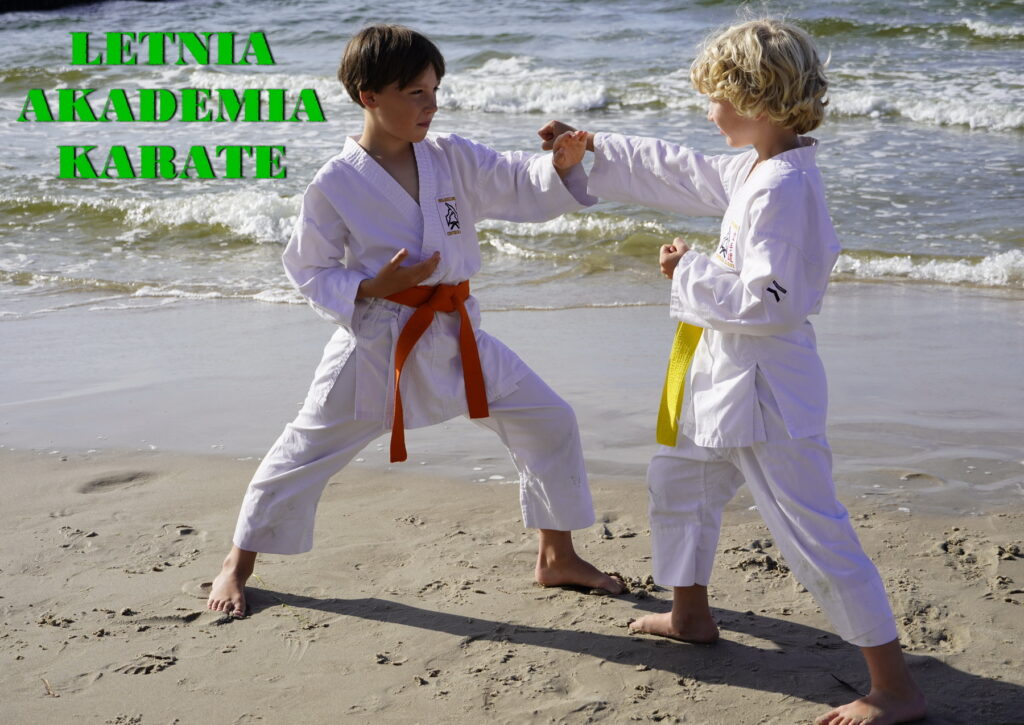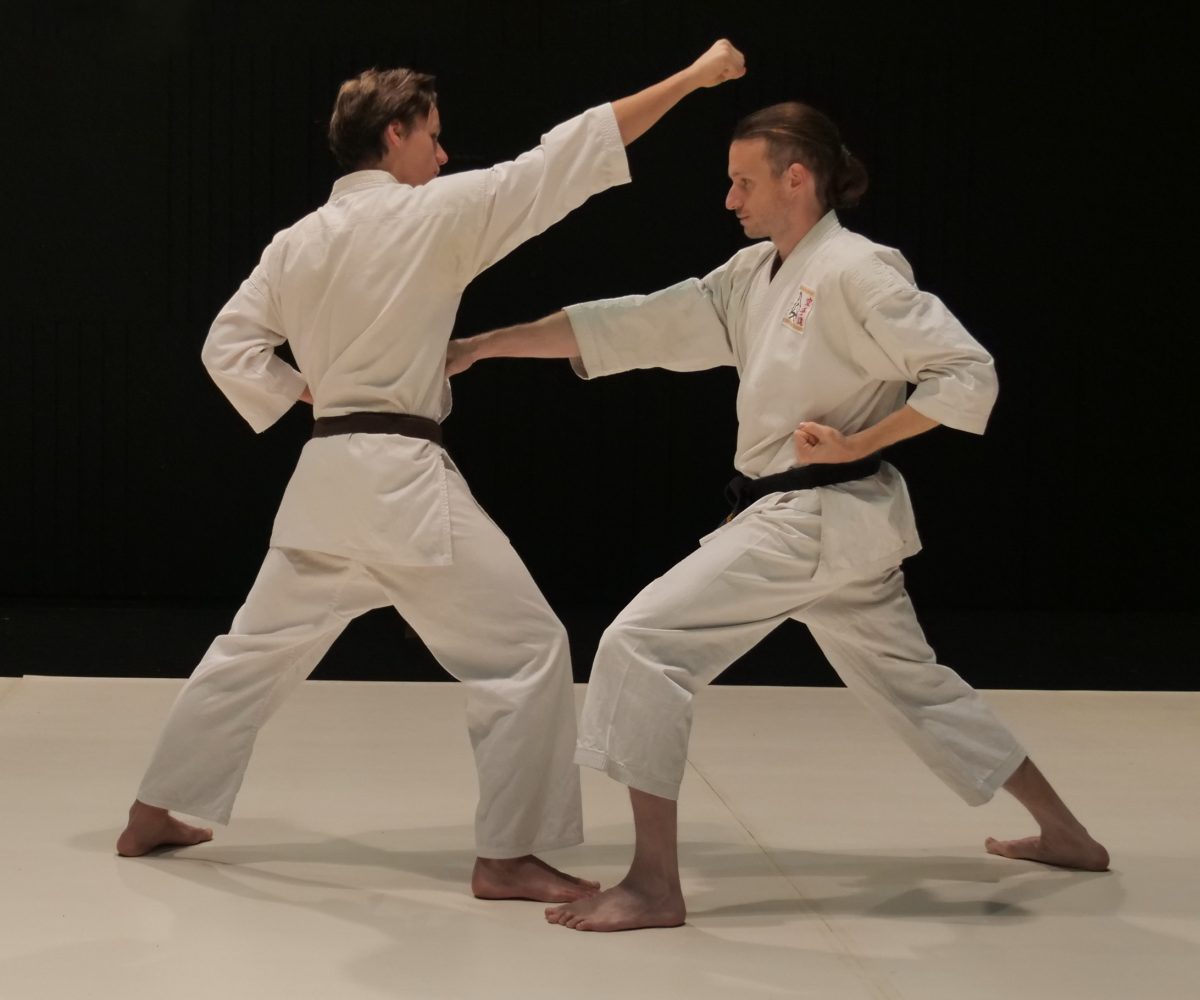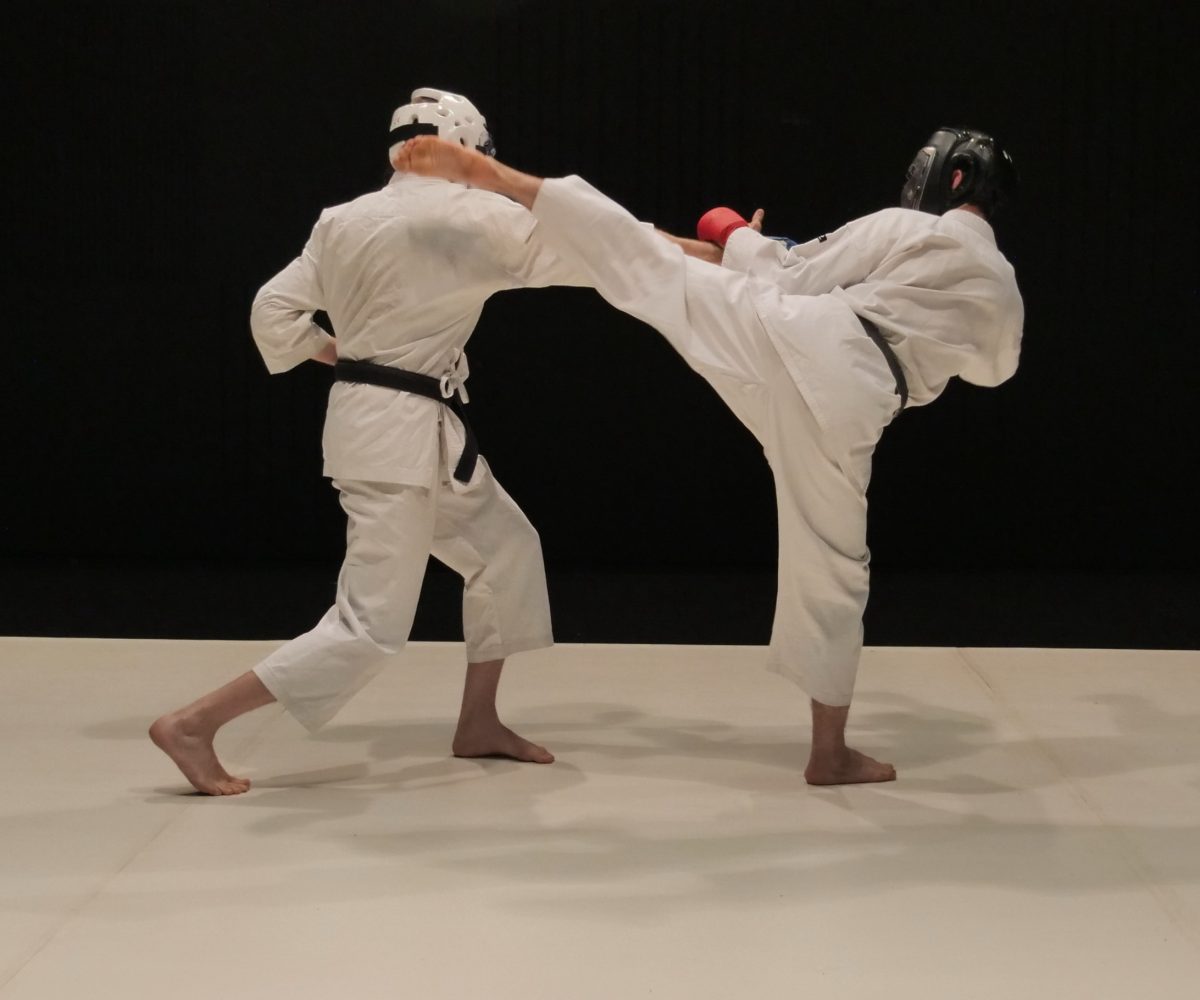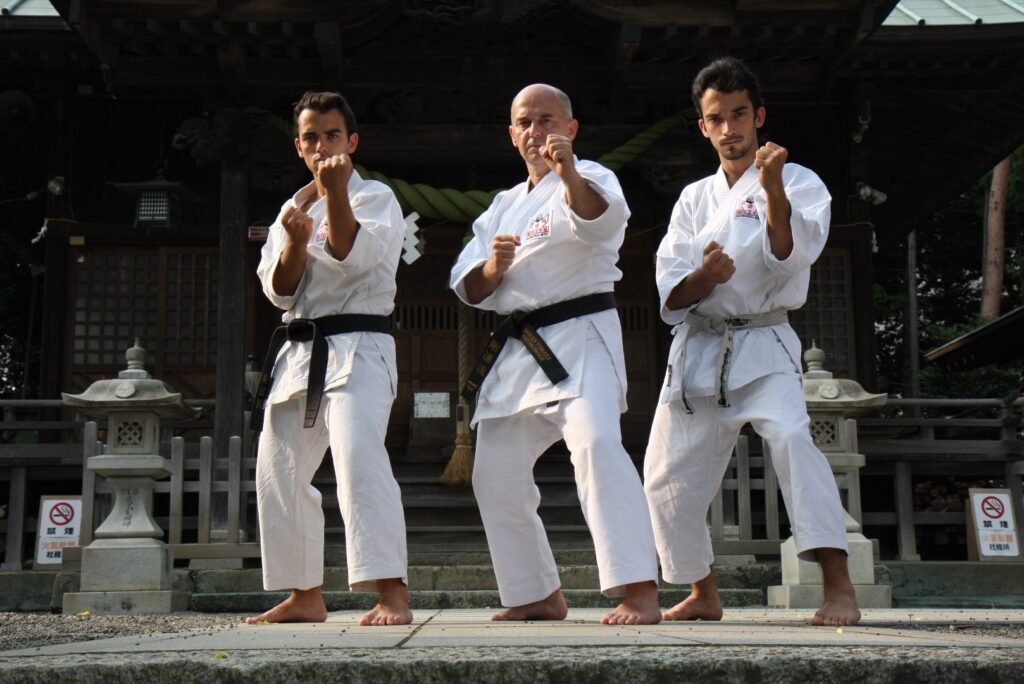Karate – 空手
Karate is a martial art that has been shaped over hundreds of years in Okinawa, the largest island of the Ryukyu archipelago as Chinese martial art adopted by the inhabitants of Okinawa
The royal edicts in force on the island, prohibiting the inhabitants from owning weapons, influenced the development of empty hand combat (karate) and the use of converted everyday tools (kobudo) in self-defense. Karate penetrated in the twenties of the twentieth century to Tokyo and other Japanese big cities, where it met with great interest
They were particularly enthusiastically received by university students and uniformed services. They obviously increased physical fitness in society and had a positive impact on defense and preparation for military service. One thing only had to be changed. In Japan, where nationalist sentiments were growing at that time, it was impossible to talk about the Chinese roots of this martial art. The name „Chinese hands” was changed to a homonym „empty hands”. Gichin Funakoshi – the father of Japanese karate (teaching in Tokyo since 1922, from his teachings derives the largest style of Shotokan karate) also began to change the names of kata and individual techniques from Okinawan to Japanese. After World War II, karate spread throughout the world. In Europe, its rapid development took place in the sixties, a few or a dozen years later even in countries within the sphere of influence of the Soviet Union. Currently, there is no country in the world where karate would not be practiced.

With the development of this martial art, there was a gradual transformation into a sport. However, the earlier emergence of different styles of karate, associated with different masters, made it impossible to unify the rules of sports combat, which is necessary in Olympic sports. Karate represented by the World Karate Federation eventually appeared at the Tokyo 2020 Olympic Games (which due to the pandemic were held in 2021 without an audience in arenas), but did not represent many achievements in the development of this martial art, as well as the views of many advanced karate practitioners in the modern world. His future at the Olympics is very uncertain.
Hanshi Tomasz Piotrkowicz started practicing jujitsu and the basics of karate in 1970, and since 1972 he has devoted himself completely to karate. The first eight years were independent training with friends and exchange of experiences with other, then few karateka in Poland and practitioners of related martial arts, such as kung fu, taekwondo and jujitsu. In the eighties Polish instructors learned mainly from trainers from Italy (Giuseppe Beghetto, Dario Gamba, Giorgio Bortolin) and occasionally visiting Japanese (Keigo Abe, Hideo Ochi, Taiji Kase). During his studies at Warsaw University hanshi Piotrkowicz trained Shotokan karate and Korean Kyoksul style. In 1980 he finished a karate instructor’s course organised for the first time in Poland and held trainings at the Warsaw University. In 1981 he was a refree at the 1st Championships of the Polish Karate Federation. He was a coach of student clubs at the University of Warsaw and the Agricultural Academy (Warsaw University of Life Sciences). He taught karate in Germany (DDR) as a DKV (German Karate Association) examiner, he also taught karate in Lithuania, in Ukraine, in Czech Republik and Slovakia. He even taught karate to U.S. Marines and performed in Japan as a visiting professor. He was elected in the eighties the president of the Student Karate Federation, in the nineties the president of the Polish Karate Association, and currently he is the president of the European Budo Association. He had the opportunity to practice and learn karate from the greatest Japanese masters. Shotokan took his first steps in karate thanks to Hideo Ochi from JKA and Hirokazu Kanazawa from SKIF. He introduced to Poland Gosoku-ryu style of master Takayuki Kubota, with whom he collaborated for almost twenty years and hosted him many times in Poland.
Thanks to his efforts, many masters from various styles of karate came to Polish, such as Isao Ichikawa from Doshinkan, Hideo Ochi from Shotokan, Fumio Demura from Shito-ryu (Genbukai), Takayuki Kubota from Gosoku-ryu, Takemasa Okuyama from Shotokan. Hanshi Piotrkowicz hosted in Warsaw the official delegation of the Japan Karatedo Federation with the master Toru Arakawa from Wado-ryu at the helm. He also had the opportunity to practice with the greatest masters of karate and kobudo from Okinawa, such as Tsuguo Sakumoto (Ryueiryu), Isao Arakaki (Shorin-ryu), Minoru Higa (Shorin-ryu), Morio Higaonna (Goju-ryu), Zenpo Shimabukuro (Shorin-ryu), Tetsuhiro Hokama (Goju-ryu), Takenobu Uehara (Uechi-ryu), Tsuyoshi Uechi (Isshin-ryu), Yoshio Kuba (Goju-ryu), Tsutomu Nakahodo (Shohei-ryu), Sokuichi Gibu (Shorin-ryu), Seisho Itokazu (Uechi-ryu), Hiroshi Akamine (Shorin-ryu, Ryukyu kobudo).
It was he who organized the World Karate Championships for the first time in Poland.
Hanshi Tomasz Piotrkowicz is the author of many studies, books and training videos in the field of budo.He is currently developing his studies of Japanese martial arts and their relationship to other martial arts from Southeast Asia, Korea and China. He participates in the development of a karate school embodying tradition and modernity – a new style of Mushin-ryu.





